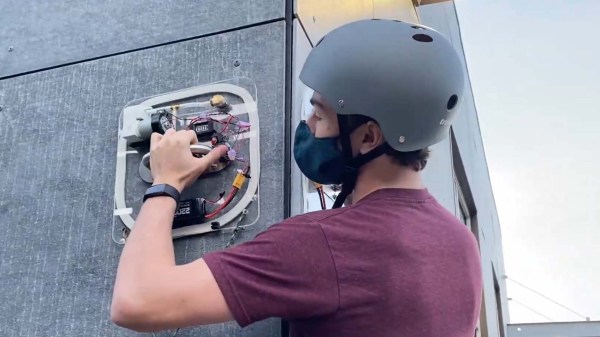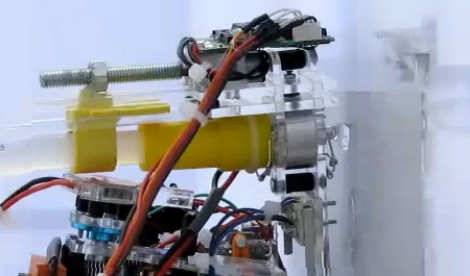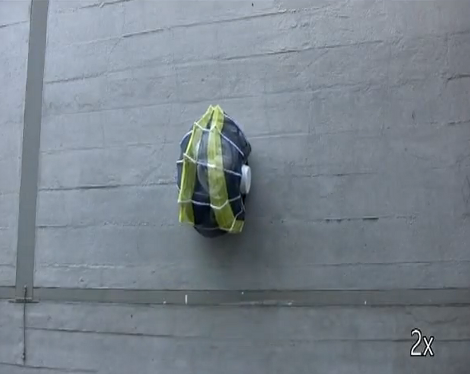Walls can’t hold [Elijah Cirioli]. The would-be superhero has been busy scaling the sides of buildings using his self-contained vacuum climbers. (Video embedded after the break.)
After being inspired by the winning project of an Air Force design challenge, our plain-clothed crusader got to work on a pair of prototype vacuum climbers. The wooden prototypes were an unexpected success, so work soon began on the models featured in the video after the break. The main improvements in this second version included using ¼ inch acrylic instead of plywood, as well as an improved gasket for a better seal against the imperfect exterior of many building walls.
While the system would still ultimately struggle with brick walls (and other imperfect surfaces), it performs more than adequately when ascending smoother concrete walls. And while the acrylic was a far better choice than the plywood, one of the acrylic panels still developed a fracture. Even so, the results speak for themselves, and we have to applaud the inventor’s seemingly unconditional trust in his equipment.
We haven’t seen a follow-up from [Elijah Cirioli] recently, so here’s hoping that he’s busy working on version three, and that he’s not stuck up a wall somewhere. In the meantime, check out how someone accomplished similar wall-climbing feats using salvaged microwave transformers.
Continue reading “Scale Buildings With The Power Of Suction”


















